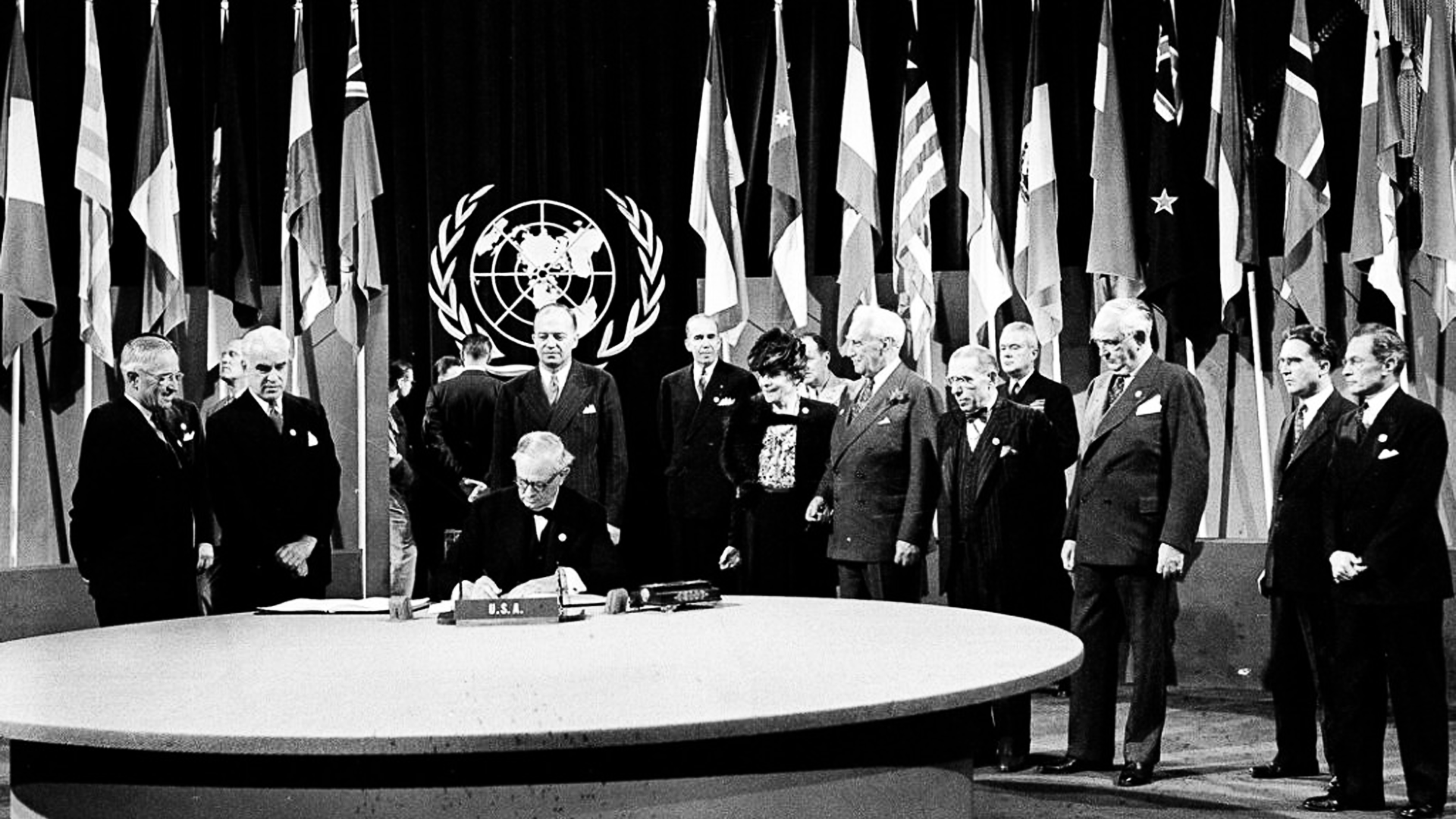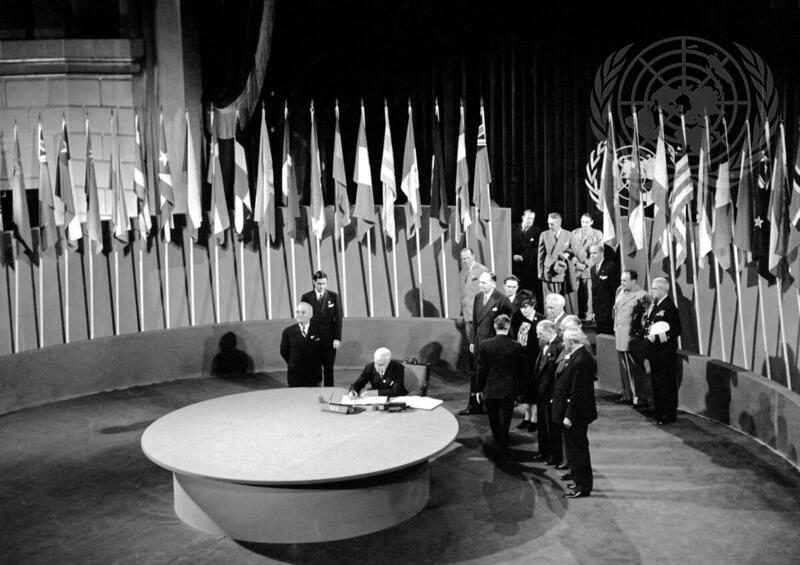America Signs On to the United Nations

United Nations Charter with official UN emblem
What Happened?
On August 8, 1945, President Harry S. Truman picked up a plain 10-cent pen and signed the United Nations Charter, officially making the United States the first country to ratify the document. It wasn’t flashy, but it was monumental. The world was still reeling from the devastation of two world wars in three decades, and this act represented a bold step toward something radically different: a shared, international commitment to peace, justice, and cooperation.
The UN Charter was born in San Francisco just weeks after Germany surrendered. There, delegates from 50 countries — including major powers like the U.S., U.K., Soviet Union, and China, came together to build a framework for peace. They drafted a document that embedded human rights, sovereign equality, and the rule of law into the DNA of the postwar order. President Truman, newly sworn in after Roosevelt’s death, warned the world: 'If we fail to use [the UN Charter], we shall betray all those who have died so that we might meet here in freedom and safety to create it.'
The U.S. Senate ratified the Charter with an overwhelming 89-2 vote. One of the few dissenters, Senator Hiram Johnson, literally cast his 'no' vote from the Senate barbershop, towel still on his face. It was a rare breach of decorum when the Senate chamber erupted into applause upon passage. The world was listening. America had just said yes — yes to peace, yes to diplomacy, yes to rebuilding a world ravaged by war.
But the UN was never just an ideal. It quickly became a stage for Cold War showdowns, humanitarian breakthroughs, and global progress. It facilitated peacekeeping missions, fought hunger through the World Food Program, and protected children through UNICEF. It gave us the Universal Declaration of Human Rights, nuclear disarmament talks, women’s rights campaigns, climate treaties like the Kyoto Protocol, and even emergency health missions like the Ebola response.
Some critics argue the UN was born in a different world, one that no longer exists. But the truth is, the world has always been messy. On the same day Truman signed the Charter, headlines were dominated by war crimes tribunals, rising inflation, growing Chinese influence, and the aftermath of a bomber crashing into the Empire State Building. The threats were real, the world was fractured, and that’s precisely why the UN was created.
The United Nations isn’t perfect. But it remains one of humanity’s boldest experiments: a global table where the voices of the many, not just the powerful, can be heard. And on August 8, 1945, the United States pulled out a humble pen and chose dialogue over destruction. That decision continues to echo across decades of diplomacy, development, and dreams of peace.
Why It Matters
The ratification of the United Nations Charter marked the beginning of a new era, one where war-weary nations dared to imagine cooperation over conquest. It was the first serious global attempt to prevent future world wars, protect human rights, and tackle challenges that cross borders. In becoming the first nation to ratify the Charter, the U.S. didn’t just take a seat at the table, it helped build the table. The ideals laid out in the Charter — dignity, equality, justice — remain vital today in a world still struggling to live up to them.
?
Why did the United States play such a central role in the formation of the United Nations?
What role has the UN played in maintaining global peace since its founding?
How have U.S. attitudes toward the UN changed over time?
In what ways has the UN succeeded or failed to live up to its founding mission?
How does the work of the UN today connect with issues you care about — like climate change, children’s rights, or global health?
Dig Deeper
On June 26, 1945, delegates from 50 countries signed the charter of the United Nations in San Francisco, creating an international government tasked with maintaining peace around the world in the wake of World War II. After the signing, President Truman delivered a speech to the delegates in which he stated, 'With this Charter the world can begin to look forward to the time when all worthy human beings may be permitted to live decently as free people.'
Related

European Exploration of the Americas
When European explorers set sail across the Atlantic, they weren’t just chasing trade routes—they were rewriting the world’s future. But discovery for some meant devastation for others.

Fascism: Power, Propaganda, and the Fall of Democracy
Fascism emerged from the ruins of World War I and found its foothold in fear, nationalism, and economic despair. It promised unity, but delivered control, conformity, and catastrophe.

Human Rights
Human rights are the basic freedoms and protections that belong to every person on Earth. They help keep people safe, ensure dignity, and make freedom, justice, and peace possible. But these rights aren’t just given—they must be understood, protected, and defended by all of us.
Further Reading
Stay curious!
